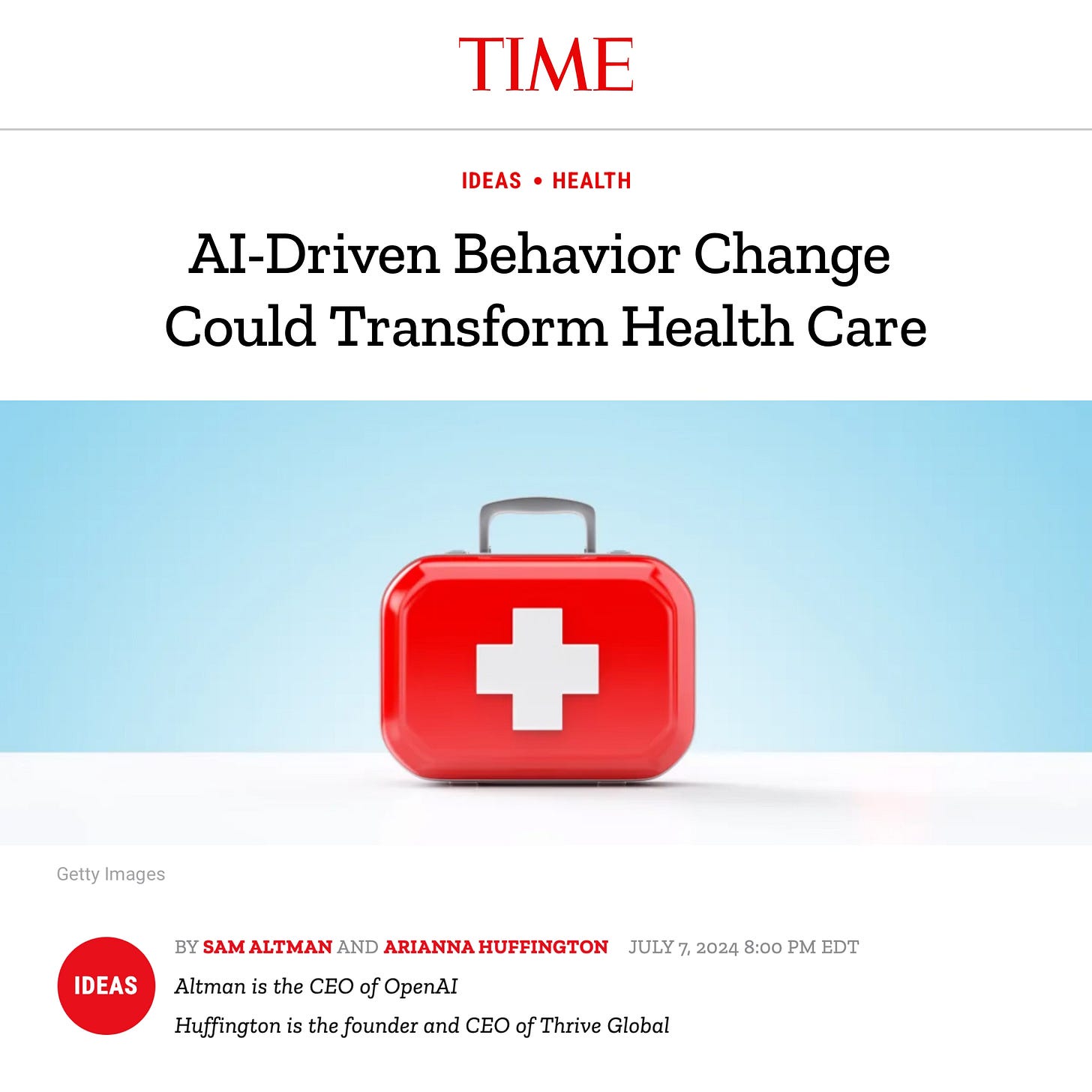Building Thrive AI: Navigating the Challenges of Deploying AI Tools in Organizations
A detailed guide to making AI applications thrive within your organization
The recent announcement of Thrive AI, a collaboration between Sam Altman and Arianna Huffington to create an AI-driven health coaching platform, has once again thrust AI's potential in healthcare into the spotlight. While the long-term impact of such initiatives remains to be seen, this development underscores a broader trend: organizations across industries are increasingly looking to harness the power of Large Language Models (LLMs) to enhance their services and operations.
This surge of interest isn't limited to high-profile collaborations or major tech companies. From healthcare providers to financial institutions, from educational organizations to government agencies, entities of all sizes are exploring how LLM-powered tools can drive innovation, improve efficiency, and create new value for their stakeholders.
However, the path to successful LLM implementation is complex and challenging. Organizations face numerous questions:
How do we ensure data privacy and regulatory compliance, especially in sensitive fields like healthcare?
How can we integrate these powerful tools into existing workflows without disrupting critical operations?
How do we balance the capabilities of AI with the irreplaceable value of human expertise?
Most importantly, how can we develop and deploy our own innovative AI solutions that address our unique organizational needs and create a competitive edge?
This article aims to address these pressing questions and more. Drawing from my experience at Intertwine and at MITRE, guiding organizations and government agencies through large scale health AI implementations, we'll explore key considerations for deploying LLM tools effectively and responsibly. These insights are designed to help you navigate the complexities of LLM deployment, whether you're looking to create the next groundbreaking AI application or simply enhance your existing processes.
In the following sections, we'll dig more deeply into seven crucial aspects of LLM implementation:
Assessing Risk Tolerance
Managing Your Data Carefully
Defining Clear Evaluation Metrics
Planning for Continuous Improvement
Setting Reasonable User Expectations
Considering Various Implementation Approaches
Choosing the Right Model and Infrastructure
Whether you're a healthcare provider envisioning an innovative patient care solution, a financial institution aiming to revolutionize customer service, or a tech company looking to optimize internal processes, this guide will provide you with valuable insights to navigate the complex landscape of LLM deployment.
Let's explore how you can harness the power of LLMs to create your own success story, addressing unique challenges and unlocking new opportunities for your organization.
1. Assess Risk Tolerance
Before diving into LLM implementation, it's crucial to understand and evaluate your organization's risk tolerance. Here are some key points to consider:
Keep reading with a 7-day free trial
Subscribe to Code and Context to keep reading this post and get 7 days of free access to the full post archives.



